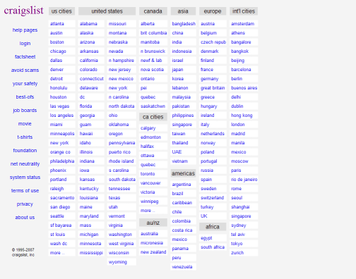The global trading industry has never been this accessible and efficient for all parties involved. Crossing networks typically have a set membership that buys and sells securities among themselves. Securities also https://www.xcritical.com/ may be restricted to just a particular subset of the network’s membership. Crossing networks also may be used by company executives to divest large volumes of stock without negatively impacting the value of the company’s stock. Crossing networks are electronic platforms that match buy and sell orders at predetermined points throughout the trading day, as well as after the closing bell rings. Alternative Trading Systems face operational risks such as system glitches and cyber threats, necessitating robust risk mitigation strategies and cybersecurity protocols.
Know Before You Go – Starting an Alternative Trading System

An alternative trading system (ATS) is a non-exchange trading venue that matches buyers and sellers for transactions. Contrary to traditional stock exchanges, it’s regulated as a broker-dealer instead of an exchange. There are ats trading many benefits to using an ATS, such as increased liquidity, lower costs, and greater flexibility. For example, an ATS can provide more liquidity for a security by providing shareholders with a means to sell private company shares. In addition, an ATS may offer lower costs than an exchange, such as no membership fees or listing requirements.
Alternative trading system: Explained TIOmarkets
Some exchanges use a hybrid model, which is a combination of the order book and peer-to-peer model. This is for informational purposes only as StocksToTrade is not registered as a securities broker-dealer or an investment adviser. The main advantages of using an ATS include lower fees and faster order execution. The disadvantages include less transparency and potential for market manipulation. ATS trading offers a different avenue for trading securities and can be a useful part of a diversified trading strategy.
The Future of Dark Pool Liquidity
An important rationale for MiFID 1 was to promote competition between different trading venues and decrease the costs for investors. In the European Union, the markets in Financial Instruments directive (MiFID II) provides the regulatory framework for ATS. This regulation requires ATS to register with the relevant national authorities, disclose their trading rules and operations, and adhere to specific reporting requirements. The regulation also requires ATS to implement policies that ensure fair access to their trading platforms, prevent discriminatory practices, and promote transparency.
Examples of Alternative Trading System

While the general principle of alternative trading systems stands true for all of the below-presented variants, it is crucial to understand their distinctions. Tamta is a content writer based in Georgia with five years of experience covering global financial and crypto markets for news outlets, blockchain companies, and crypto businesses. With a background in higher education and a personal interest in crypto investing, she specializes in breaking down complex concepts into easy-to-understand information for new crypto investors. Tamta’s writing is both professional and relatable, ensuring her readers gain valuable insight and knowledge. These fully computerized forums or networks enable brokerage houses and professional traders to make trades without using an intermediary to process their transactions. That’s another issue we ran into when I was at FINRA, so I make sure I advise my clients how to get through that demonstration without any issues or concerns.
What Constitutes an Alternative Trading System?
However, as with any trading system, dark pools are not without their challenges, and there are several issues that need to be addressed if they are to remain a viable option for traders in the future. In this section, we will explore some of the key challenges facing dark pools and discuss possible solutions. Flash trades create privileged access to certain information for a segment of the market and create disincentives for dealers to quote and quote aggressively. Flash orders generate only private benefit to the ATS that seek to take trading volume from other venues. Dark pool trading arises from a deliberate effort to avoid the transparency of exposing bids and offer quotes to the public marketplace.
Types of Trading in the Stock Market
- An ATS is an electronic venue that also brings buyers and sellers together; however, it does not have any regulatory responsibilities (though it is regulated by the SEC) and trades both listed and unlisted securities.
- The most prominent flaw of ATS platforms is the lack of appropriate regulations related to price manipulation.
- ATSs have expanded to other asset classes, such as MarketAxess and Tradeweb, for electronic bond trading.
- Dark pools allow investors to place institutional orders for publicly traded securities or unlisted stocks on private exchanges.
- As mentioned above, the fragmentation of buying and selling into multiple venues has been accompanied by an increase in darkish buying and selling within the final decade.
Trading refers to the buying and selling of securities in the stock market with the aim of making a profit. It involves analysing market trends and identifying opportunities to enter the market, thereby making a profit. Fundamental trading relies on analysing a company’s financial health, performance, and economic factors to determine a stock’s intrinsic value. Traders using this approach buy or sell based on the underlying fundamentals of the company. The stock market offers a vast playground for traders, with different types of trade strategies blooming from individual knowledge and beliefs.
What is an Alternative Trading System Platform?
That’s not so with a flash trade, which occurs when an incoming order to one ATS or exchange is revealed (flashed) for a fraction of a second before being sent to the national market system. If a trader at the venue that received the flash can match the best bid or offer in the system, then the trader can pick up that order before the rest of the market can see it. Dark pools resulted due to the need for institutional investors to trade large quantities without affecting the market.
What are the key features and advantages of Alternative Trading Systems?

Another option is to use an ATS that is registered with the SEC and subject to regulatory oversight. The alternative trading system is a much-needed trading venue that accommodates more prominent corporations and whale investors across the globe. ATS platforms allow companies to share and purchase high-volume shares without price slippage and delays. However, these platforms sometimes have technical issues and present considerable price manipulation risks.
Dark pools allow private companies to minimise this risk and execute a share issuance deal without unpleasant surprises. Despite the lack of information and heightened secrecy, dark pools are entirely legal and regulated by the SEC. There are several variations of dark pools, including broker-dealer and exchange-owned versions. For companies and investors who seek to determine their favourable prices, broker-dealers are a superior choice.
All alternative trading systems are known as “dark pools” because trades that take place on these systems aren’t public record. This opacity prevents retail investors from seeing execution pricing or trade volume, which reduces price distortion in public exchanges. The proliferation of Alternative Trading Systems has exerted a profound impact on traditional exchanges and market dynamics. ATS platforms have siphoned liquidity away from traditional exchanges, fragmenting order flow across multiple venues. This fragmentation poses challenges for market participants, requiring sophisticated technology and strategies to navigate fragmented liquidity pools effectively.
Unlike traditional exchanges, ATS often disclose detailed information about the orders and trades taking place on their platforms. This transparency allows market participants to make more informed trading decisions. While alternative trading systems provide numerous benefits, they also face regulatory considerations.
The new ways of conducting business may profoundly change the balance of market power and tilt the playing field. Although by itself it does not create asymmetry or an uneven playing field—and it does add to market liquidity—HFT seems to put the pace of human deliberation at a disadvantage. HFT can reduce the benefits of stop orders for regular investors who employ them as a means of managing their risk.
The S&P Midcap 400/BARRA Growth is a stock market index that provides investors with a benchmark for mid-cap companies in the United States. Alternative trading systems make money by charging fees and commissions for transactions. The more trades a trader makes, the more cost to them and more sales revenue for the ATS. Regulators have stepped up enforcement actions against ATSs for infractions such as trading against customer order flow or making use of confidential customer trading information. These violations may be more common in ATSs than in national exchanges because ATSs face fewer regulations. For beginners, it is advisable to start with less complex and lower-risk trading strategies.
While there are no easy solutions, by working together, regulators, dark pools, and traders can create a more transparent and efficient market that benefits everyone. With so many different dark pools in operation, it can be difficult for traders to find the liquidity they need. This can result in fragmented markets and reduced liquidity, which can make it more difficult for traders to execute trades. Dark pools have been around for quite some time, and they have become an increasingly popular means of trading stocks and other financial instruments.
Dark Pools offer confidentiality and minimize market impact, making them favored venues for executing sizable trades discreetly. Dark pools allow investors to place institutional orders for publicly traded securities or unlisted stocks on private exchanges. The transaction information remains confidential until the trade is executed and reported. Investors interested in placing large orders or buying large security blocks without alerting the public use dark pools. Dark pool examples include broker-owned or dealer-owned exchanges or private exchange markets operated by public exchanges.
In the United States, ATS are subject to regulation by the securities and Exchange commission (SEC) under Regulation ATS. The regulatory framework aims to ensure fair and orderly markets while balancing the need for innovation and competition. When it comes to mitigating these risks, there are several options available to investors. While traditional exchanges may have lower liquidity, they offer greater transparency and oversight.
It bypasses the need for a centralized exchange, enabling direct matching of trades between buyers and sellers. The new interpretation is intended to capture systems that centralize orders, either by the display or the processing and execution of orders. Over the past 30 years, the SEC has examined how to apply the term «exchange» to systems that have been variously called proprietary trading systems (PTSs), broker-dealer trading systems, and most recently, ATSs. In order to investigate this, Table 4.2 compares the distribution of ATS and total trading among different industry groups as defined by Thomson Reuters.
An ATS is an electronic venue that also brings buyers and sellers together; however, it does not have any regulatory responsibilities (though it is regulated by the SEC) and trades both listed and unlisted securities. They are known as multilateral trading facilities in Europe, ECNs, cross networks, and call networks. Most ATSs are registered as broker-dealers rather than exchanges and focus on finding counterparties for transactions. Call markets are a subset of ATS that group together orders until a specific number is reached before conducting the transaction.




